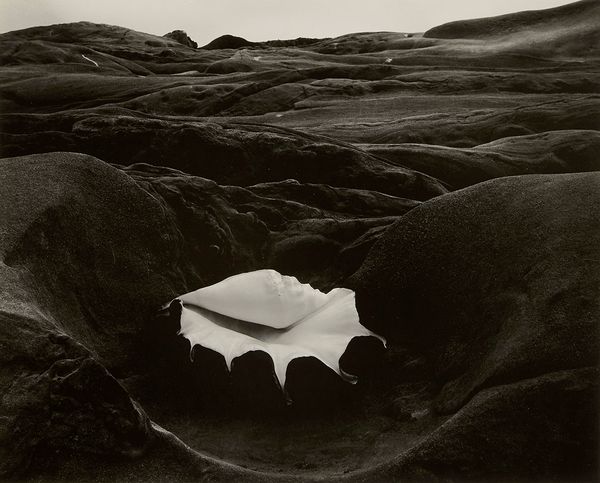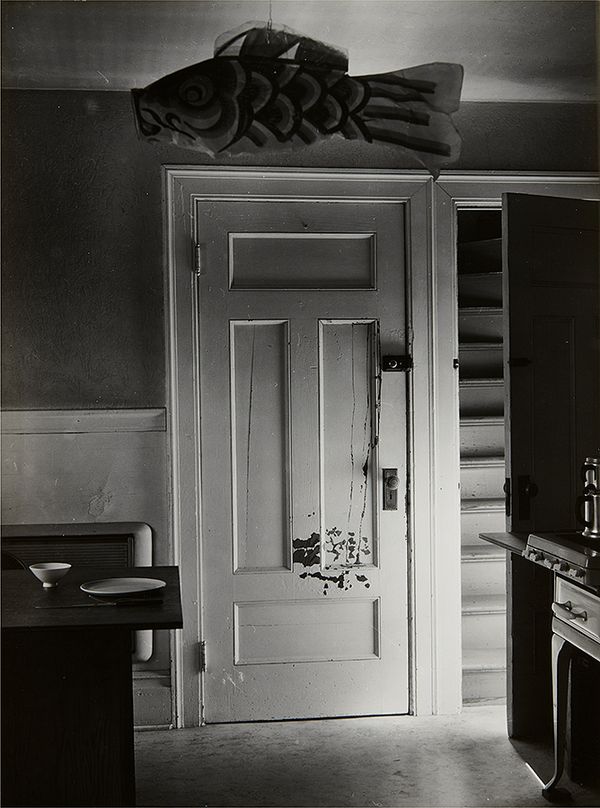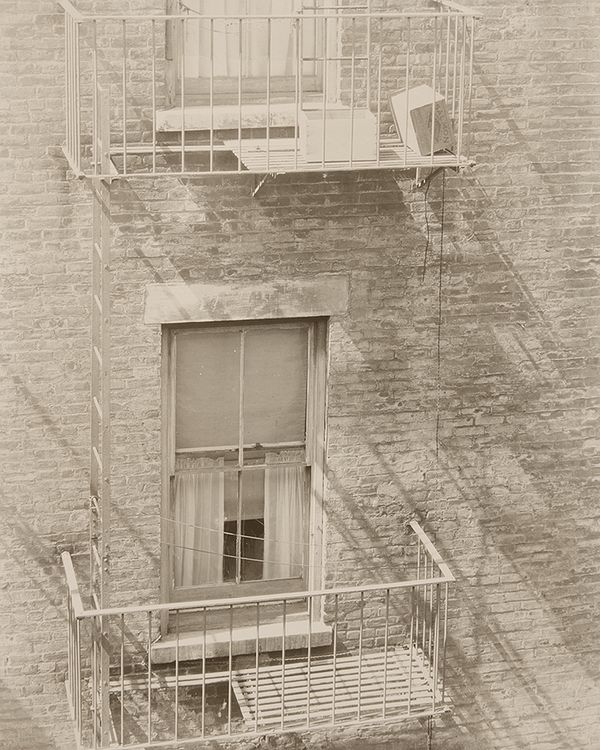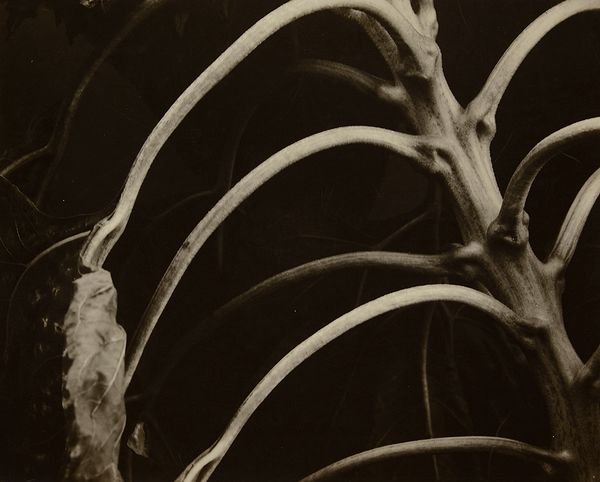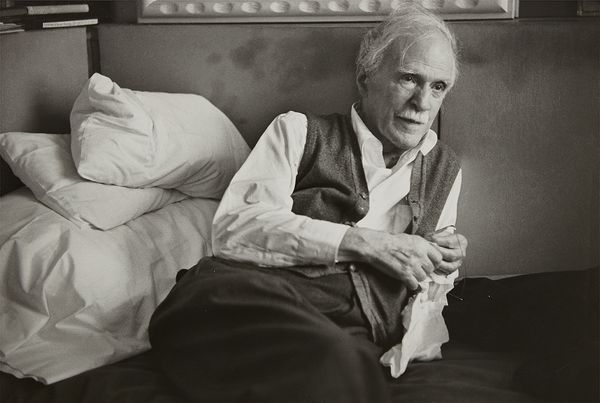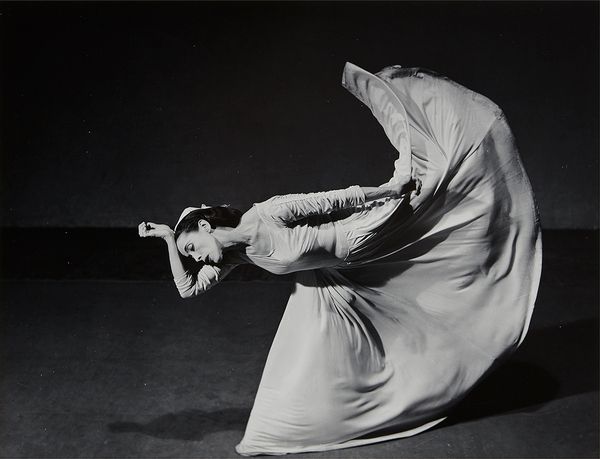Edward Weston, Shell and Rock - Arrangement, 1931. Inside the Photograph: Further Selections from the Peter C. Bunnell Collection.
Phillips is honored to present the last in our series of auctions of photographs from the collection of renowned curator, teacher, historian, and author, Peter C. Bunnell (1937–2021), with proceeds benefiting six institutions. Below, we trace Bunnell’s relationship to those institutions.
Additionally, discover Senior International Specialist Chris Mahoney’s interview with curator and Bunnell student Malcolm Daniel and his video conversation with Joel Smith, Bunnell protégé and Curator of Photographs at the Morgan Library and Museum.
The online auction Inside the Photograph: Further Selections from the Peter C. Bunnell Collection is open for bidding through 17 October.
It is difficult to imagine the development of a critical narrative in 20th century photography without considering the impact of Peter C. Bunnell. His visionary career redefined the role of photographic art and compelled institutions to reconsider their approach to the field. His work as a historian, curator, photographer, collector, and influential professor helped define the role that photography holds in art culture today.
Works from Bunnell’s personal collection are up for auction this season at Phillips, with proceeds benefitting six institutions that were dear to him — The Rochester Institute of Technology, The George Eastman Museum, Ohio University, Yale University, The Museum of Modern Art, and Princeton University. The funds will be used to establish institutional endowments that support the study of photographic history.
Phillips spotlights Bunnell’s affiliation with these six institutions, and how his connections to them influenced his career and outlook. The stories showcase how he developed an intimate understanding of photographic history as well as a distinctive and contemporary viewpoint of the art form.
Minor White, Attic Door, 72 N. Union Street, Rochester, New York, 1956. Inside the Photograph: Further Selections from the Peter C. Bunnell Collection.
Rochester Institute of Technology
Bunnell’s early interest in photography blossomed as an undergraduate at RIT when he began studying with the photographer Minor White. In 2012, he spoke to Aperture magazine about his lessons with White, fondly remembering, “It was a whole new approach. We cut out pictures and glued them together to make multiple images. We did everything in that class — including learning how to ‘read’ photographs. It was very eye opening.”
In addition to his role as a professor, White was the founding editor of Aperture magazine. He engaged the young Bunnell to write articles for the publication and to correspond with photographers, launching his profile as a voice in the field and introducing him to luminaries that he would later work with throughout his career. Of the early days of the publication, Bunnell noted that it “was essentially driven by the idea that there must be some way to reposition a kind of serious photography, and that notion drew together the group of people who founded the magazine.”
Bunnell and White remained lifelong friends and colleagues. This culminated in 1989, when Bunnell curated Minor White: The Eye That Shapes, a traveling retrospective exhibition accompanied by a book of the same name that remains the best source of information on White’s work and influence. The well-received exhibition traveled to New York’s Museum of Modern Art, the Princeton Art Museum, Boston’s Museum of Fine Arts, Rochester’s George Eastman Museum, and others.
Edward Steichen, Laughing Boxes, West 86th St., New York City, 1922. Inside the Photograph: Further Selections from the Peter C. Bunnell Collection.
The George Eastman Museum, Rochester
George Eastman brought photography to the mainstream through the Eastman Kodak company and its newly affordable cameras. A noted philanthropist, Eastman’s gifts founded multiple cultural institutions in Rochester, including the Eastman School of Music and the Rochester Philharmonic Orchestra. His mansion in the city became the world's first museum devoted to photography.
Bunnell’s first opportunity at the museum stemmed from a Thanksgiving dinner gathering at the home of Minor White that Bunnell attended while still a student. There, he met the seminal photographic historians Beaumont and Nancy Newhall, who invited him to work at the museum as a staff associate during the summer. Later, he would return to the museum frequently to present lectures and participate in public discussions.
The museum’s collection houses several million objects in the fields of photography, cinema, photographically illustrated books, and photographic and cinematographic technology. The institution is also a leader in film preservation and photographic conservation.
Edward Steichen, Backbone and Ribs of a Sunflower, circa 1920. Inside the Photograph: Further Selections from the Peter C. Bunnell Collection.
Ohio University
Following his graduation from RIT, Bunnell felt compelled to continue his studies of photography, but at the time there were few institutions that offered graduate level study in the field. Ohio University was progressive in this regard, as one of the first schools in the United States to offer a Master of Fine Arts degree in photography.
Bunnell studied at Ohio University with photographer Clarence H. White, Jr., earning his MFA in 1961. His thesis document was an exhaustive study of his professor’s father, the pioneering American photographer Clarence H. White, who was a founding member of the Photo-Secession movement. This early research led Bunnell to curate an exhibition of Clarence H. White’s work at The Museum of Modern Art in 1971. Ultimately, the Ohio University Gallery of Fine Art published Bunnell’s definite volume on the influential photographer, Clarence H. White: The Reverence for Beauty, in 1986.
Henri Cartier-Bresson, Alfred Stieglitz, 1946. Inside the Photograph: Further Selections from the Peter C. Bunnell Collection.
Yale University, New Haven
At Yale, Bunnell was the first student in the Art History Department to begin a dissertation on photography. The subject of this study was the life and work of photographer and gallerist Alfred Stieglitz. Remaining close to the primary sources of history, he also worked as a research associate in the Alfred Stieglitz Archives — a collection of Stieglitz’s letters and papers that were donated to Yale beginning in 1949 by his wife, Georgia O’Keeffe.
His association with the school continued long after his 1965 graduation. Throughout his career he wrote for various Yale publications and often returned to New Haven for conferences and to deliver lectures on campus.
Yasuhiro Ishimoto, Five Selected Abstract Studies, 1980s–1990s. Inside the Photograph: Further Selections from the Peter C. Bunnell Collection.
The Museum of Modern Art, New York
Bunnell began his time at New York’s Museum of Modern Art as a temporary cataloguer, but within just four years he had been promoted to curator of photography.
The standout show from his MoMA tenure was 1970’s Photography into Sculpture. The groundbreaking exhibition broke norms by presenting photographs as three-dimensional objects. Twenty-three mostly young artists were selected who engaged with subject matter as varied as the body, sexuality, landscape, media, and politics, using materials as diverse as photo linen, light bulbs, cardboard, wood, AstroTurf, and plastics. The exhibition challenged what a photograph could be.
Ahead of the exhibition, Bunnell shed light on his curatorial ideas, writing in the MoMA Newsletter, “The current notion of what a photograph looks like is that it is a piece of paper on which there is a more-or-less recognizable image which is interpreted in terms of two dimensions standing for three, picture size representing life size, and a variety of grays representing colors. All of these conceptions are perfectly adequate as far as they go, but they do not exhaust the complexities of contemporary photography.”
Barbara Morgan, Martha Graham - Letter to the World (The Kick), 1940. Inside the Photograph: Further Selections from the Peter C. Bunnell Collection.
Princeton University
In 1972 Bunnell began teaching at Princeton, accepting the role of David Hunter McAlpin Professor of the History of Photography and Modern Art — the first endowed chair of photography in the United States. Students remember him as an exceptionally kind, dynamic, and supportive mentor.
Former student Malcolm Daniel, the Gus and Lyndall Wortham Curator of Photography at the Museum of Fine Arts, Houston, told Phillips, “When you had a class with Peter, he came into the room with photographs in hand. You were studying the medium firsthand, not through reproductions, and that was unusual.” Daniel went on to say that Bunnell’s persona was “larger than life, booming, jovial, with a deep connection to the medium, a belief in the photographers that he was talking about, a profound understanding of the work, and a kind of irrepressible enthusiasm that he communicated to his students.” He added, “It brought art history alive in a way that I, at least, did not feel when I was looking at reproductions.”
While at Princeton, Bunnell held two terms as director of the Princeton University Art Museum and was curator of photography there from 1972 until his retirement. Bunnell’s legacy lives on through his students — his protégé’s hold significant positions at institutions and publications throughout the globe.
Discover More from Inside the Photograph: Further Selections from the Peter C. Bunnell Collection >
Recommended Reading
How Peter C. Bunnell Inspired an Entire Generation of Photography >
The Striking Vision of Fred and Laura Bidwell >
Specialist Picks: On Identity and New York City >
